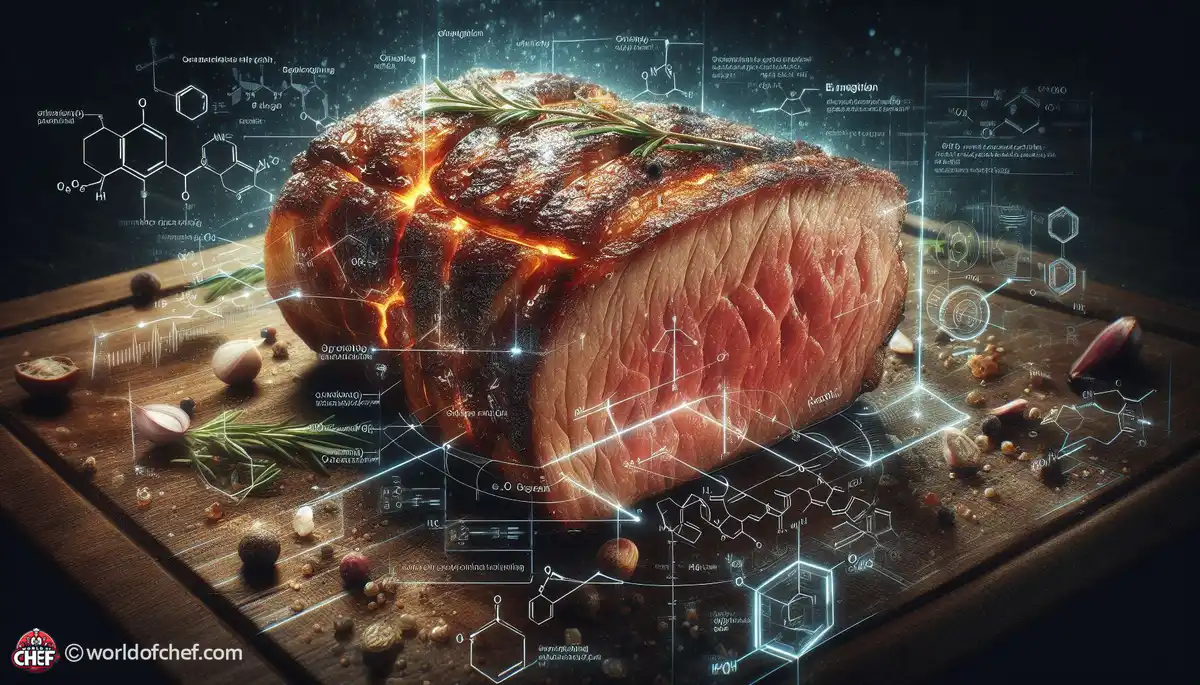
Simmering with Spices: Infusing Flavor into Your Dishes
Emery Donley - Oct 8, 2024 - 8 min read


Roasting is an ancient method of cooking that promises to transform ordinary meats into super-delicacies. Essentially, roasting is cooked meat cooked in dry heat using an oven or open flame. And thus, this process triggers a chemical reaction symphony that results in the rich flavors and the appetizing aromas we connect with perfectly roasted meats.
There is one reason why the magic of roasting happens to be centered: the Maillard reaction. This process was discovered by French chemist Louis-Camille Maillard, and his name bears witness to a complex process in chemistry. The amino acids and the reducing sugars present in the meat react to the high temperatures and thus generate a number of tasty compounds and appetizing aromas. The irresistible browning and caramelizing of the roasted meats leave them with that unique flavor and texture.
The journey to succulent roasted meats begins with choosing the right cuts. Using quality meats with optimal marbling and fat gives the most succulent result. Whether it is the tender prime rib or savory pork loin, the decision on the cut sets the platform for a culinary masterpiece.
Different types of meats carry different flavors and characteristics which must be known and interpreted. From the beef, offering richness in flavor and heaviness to poultry's almost delicate sweetness, every category of meat needs consideration in making it perfect for roasting.
Roasting imparts the flavor to the meat by using seasonings. Salt, pepper, herbs, and spices together combine to make the taste of the meat rather unassuming yet highly complex. Correct seasoning does not only accompany flavors but also helps make the most delicious crust while roasting is in progress.
An old technique is marination that gives meat flavor and tenderness. Whether it's an olive oil and garlic marinade or a spice and acid blend, the final roasted dish gets all the depth and complexity through marinating the meat. All of this is accomplished by letting the flavors soak into the meat for some time, making it a memorable experience in the kitchen.
You only get tender, juicy meat with a perfectly caramelized outside if you get the cooking temperature right. Be it using high temperatures to roast a piece of meat quickly or low temperatures to cook it slowly and to develop rich flavors in the meat, precise temperature control can make all the difference in the kitchen.
Resting is an important but easily forgotten step in the roasting process. Allowing cooked meats to rest allows juices to redistribute, making every bite tender and succulent. This short interlude also allows flavors to blend and intensify, bringing harmony to the dining experience.
Basting is spooning pan juices or melted fat over the surface of meat from time to time as it roasts. The result is moist meat as well as extra flavor for the meat. This process can range from using the simplest brush to using an old-fashioned basting bulb. Roasted meats at their best are due in part to the skill and art of basting.
The flexibility of basting mixtures can go in several directions. From aromatic herbs and citrus zest to rich stocks and savory sauces, the possibilities of basting ingredients open up with endless new possibilities for depth and complexity in roasted meats. Whether to complement natural flavors in the meat or to create an especially new taste experience, basting is truly one of the richest resources for food imagination.
Even though the tradition of roasting is quite ancient, newer innovative ways bring with them thrilling chances to experiment in the world of cuisine. Smoke roasting, sous vide, or even any other innovative ways to roast can create worlds of flavors and textures; they give chefs a better opportunity to experiment and widen their horizon of possibilities using roasting techniques.
Inspiration from food culture around the world makes possible the renewal of more classical roasting recipes. A variety of Asian spices and marinades, Latin American grilling techniques, or something even more unusual can transform a roasted meat into one of both familiarity and alien-ness.
Presentation is the icing on the cake that turns a dish from just something to fill the belly into a work of art. The art of plating is an art that has to do with arranging roasted meats in a beautiful manner, adding garnishes and sauces for visual interest and depth. A well-presented dish pleases the palate but also the eyes, encouraging people to savor every part of the culinary experience.
Choosing the right garnishes and accompaniments can enhance the flavors of roasted meats while adding texture and contrast to the plate. Whether it's a vibrant herb salad, a tangy fruit salsa, or a velvety potato puree, thoughtful pairings can elevate the dining experience and leave a lasting impression on diners.
In it and out, roasting arts goes much beyond cooking; indeed it is about people: It is about sharing merriment in food as in fellowship. Whether sharing over a festive holiday dinner or a casual backyard barbecues, roasted meat transcends the mundane task and goes on to make such lifelong memories and create genuine connection.
Roasting meats is one tradition passed on from generation to generation, from parent to child, and definitely cherished as a symbol of family and heritage. Thus, in embracing new techniques and flavors, we will never forget the timeless traditions that have shaped our culinary journey, ensuring that roasting's art continues to delight and inspire generations to come.

Emery Donley - Oct 8, 2024 - 8 min read

Russell Comeaux - Oct 8, 2024 - 8 min read

Walter Backus - Oct 7, 2024 - 8 min read

Samantha Thames - Oct 7, 2024 - 6 min read